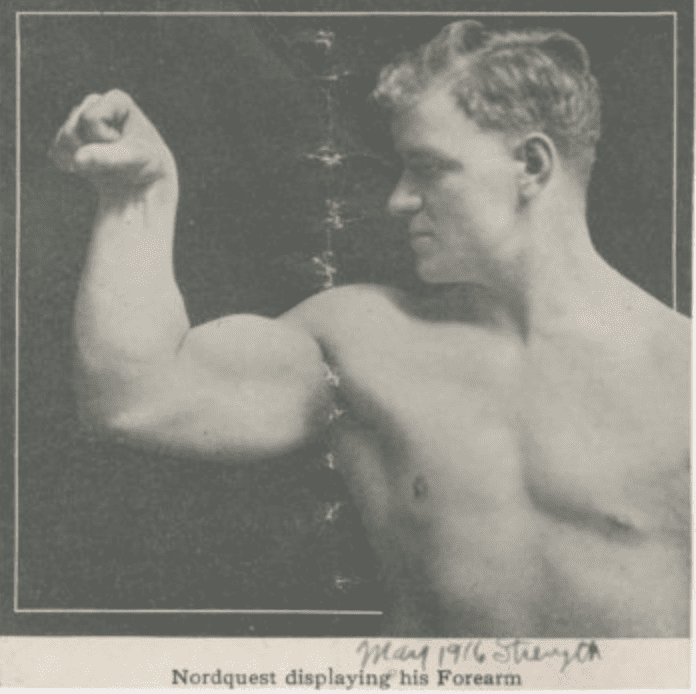Crush Grip Chronicles: Mastering Hand Strength for Power and Performance
By: Josh Bryant

In Wild and Wonderful West by God Virginia, amongst the dusty honky-tonks, pool halls and ramshackle diners, stood The Rusty Spur – a kick’n stab bar known for its clientele and its no-nonsense doorman, Jethro Bucephalus.
Jethro had a no-nonsense physique with forearms that belonged on an oxen. One evening, a pack of bikers came into town, hell-bent on causing trouble. They swaggered into The Rusty Spur, boots thudding a violent rhythm on the wooden floor.
Jethro, always ready, watched their every move.
When fists started flying, fueled by too much “hillbilly pop” and bravado, Jethro waded in. He moved with surprising suppleness for his size, his massive forearms swinging like billy clubs to deflect punches and send bikers sprawling. The alehouse altercation of fists and flying chairs left Jethro unscathed.
When the dust settled, the biker leader, Rusty, lay groaning on the floor. Jethro reached out to offer him a hand up. Unfortunately for Rusty, Jethro’s grip, honed by years of wrangling stubborn cattle, was more akin to a steel vice. With a sickening crunch, Rusty’s hand was crushed. A hush fell over the bar, then a chorus of nervous laughter. But Rusty, a man who understood respect, simply grinned and shook his head. “Damn, Jethro,” he rasped, “you pack a punch!”
Symbolism
Big forearms immediately radiate the difference between a legitimately strong individual and a planet fitness, pump and pose chrome machine junky.
Furthermore, a strong grip is crucial for success in any combat or strength sport. Greeting someone with a firm handshake establishes respect right off the bat.
Building a strong, crushing grip is an art and science. Because of this, I decided to consult world-renowned grip training expert, Joe Musselwhite, affectionately known in the grip training world as “Mighty Joe” or “Dr. Grip.” Joe owns the largest grip training museum in the world and possesses world-class grip strength.
Let’s take a look at the routine Joe designed.
Crush and Supporting Grip Training Routine
Joe had the following to say,
“The following exercises transfer or carryover well to deadlifts, pull-ups, rowing or any exercise where a stronger crush/supporting type grip is needed.
When it comes to increasing one’s crushing strength or supporting strength then “Thick Bar” Training is King!
By thick bar I mean a bar 1.5″ or thicker with 2″ diameter being the standard in thick bar training.”
Overhand DL holds with over crush: 3 sets x 3-5 reps, focus on squeezing the bar as hard as you possibly can for 5-6 seconds.
Rest at least one minute, but two minutes is optimal between sets. This will rapidly increase one’s crush/support strength!
Tips: Instead of making this a back workout, keep the weight low and focus on squeezing the bar as hard as possible.
Bar Hangs w/ Fat Grips, 3 sets x 8-10 reps (pulses), on this exercise you will squeeze in pulses as hard as you possibly can. Each pulse should be an explosive and concentrated effort! This will increase one’s crush/support strength endurance.
Contrast Dumbbell Rows: 3 sets x 6-8 reps (weight dependent) Make sure you can do the weight 8-10 reps. If not, adjust accordingly.
On this exercise you will have two dumbbells of different weight but one will have a Fat Grip type handle on it and the other will not. Begin with the thick handle dumbbell and perform the reps. Immediately upon completion, grab the standard handle dumbbell and do an equal amount of reps. The standard handle (1″) dumbbell should be the weight you would normally do with dumbbell rows. The thick bar dumbbell should be of a weight that you can complete the reps.
Post Grip Training: After you have completed the Grip Training Exercises described above then it’s time to reward your hands’ efforts with some rubber band finger extensions. Simply take a couple of medium strength rubber bands and wrap them around the ends of your fingertips and start extending and flexing your fingers until you feel a real good burn in your extensors on the back of your forearms.
One set should suffice, assuming you perform this until your extensors are fatigued. Afterward, lightly stretch your flexors (belly of forearm) and extensors (back of forearm) by getting down on your knees and placing your palms flat on the floor in front of you and very lightly start to stretch the flexors. Next, stretch the extensors in the same manner but by placing the back of your hands on the floor and lightly stretch them as well. Be careful if you’re not used to stretching tight forearm flexors and extensors as you can tweak your wrists and cause them to be tender for a few days. The post grip training will create balance in your forearms and grip by training both sides of the forearm along with the stretching to keep the muscles from becoming adaptively shortened (over time) and therefore weaker. NEVER stretch muscles prior to strength type training! Grip included!
Final Thoughts
Joe advises to give the above routine an honest try once or twice a week and continue to do so for at least 4-6 weeks and you should notice a great improvement in your crush and supporting grip strength and grip endurance strength. Skip at least two days between sessions and preferably set aside a day for your grip training.
The Grip Training Bible
